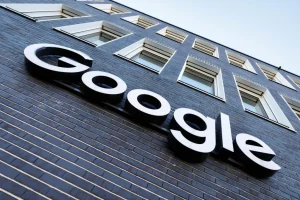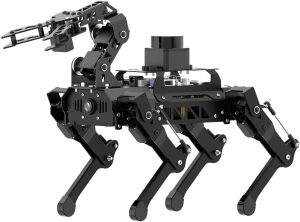Can Companies Focused on “Safe AI” Thrive in an Unregulated AI Environment?

Can "Safe AI" Companies Survive in an Unrestrained AI Landscape?
The Challenges and Opportunities of “Safe AI” in a Rapidly Evolving Landscape
As artificial intelligence (AI) evolves, companies like Anthropic, which focus on developing “safe AI,” confront unique challenges in a competitive, ethically complex ecosystem. In this article, we examine whether these companies can sustain themselves while adhering to safety and ethical standards, particularly in a market that often prioritizes speed and innovation.
The Case for “Safe AI”
Anthropic and a select group of other companies are committed to creating AI systems that ensure safety, transparency, and alignment with human values. Their mission is grounded in the imperative to minimize harm and avoid unintended consequences as AI continues to grow in its influence and complexity.
Ethical Imperative and Business Strategy
Advocates argue that a commitment to safety is not merely an ethical choice but also a strategic one. By building trust and ensuring AI systems are reliable, these companies aim to carve out a niche as responsible innovators in a crowded market.
The Pressure of Competition
Despite the aspirations of “safe AI” firms, the realities of a cutthroat marketplace may compromise their efforts. Companies that prioritize safety often struggle to match the rapid pace of innovation set by their unconstrained competitors.
Unconstrained Competitors
Companies that deprioritize safety can roll out more powerful and feature-rich systems faster, often catering to users eager for cutting-edge tools—even at the risk of greater dangers.
Geopolitical Dynamics
Additionally, AI firms in countries like China operate within frameworks that emphasize strategic dominance and innovation over ethical considerations. This creates a significant competitive edge, allowing them to potentially overshadow “safe AI” companies in development speed and market penetration.
The User Dilemma: Safety Versus Utility
Ultimately, consumers and businesses make choices based on perceived utility. Historical trends indicate that convenience, power, and performance often overshadow safety and ethical concerns.
Social Media Examples
Platforms like Facebook and Twitter grew explosively not necessarily due to their safety protocols, but rather their efficacy in connecting users and monetizing engagement—often sidelining concerns about data privacy and misinformation.
AI Applications
In the AI realm, developers may prioritize systems that offer immediate and tangible benefits, even if they carry risks such as biased decision-making or unpredictability. This places “safe AI” companies at risk of losing market share to less cautious competitors.
Funding and Survival in the AI Landscape
Funding is essential for survival and growth in the AI industry. Companies that self-regulate and impose safety constraints may find it challenging to attract investors interested in rapid returns.
Venture Capital Dynamics
Venture capital often favors high-growth opportunities; consequently, “safe AI” firms may struggle to demonstrate the explosive growth exhibited by their less-restrained rivals. Moreover, as the landscape consolidates, companies unable to scale quickly might face acquisition or competitive extinction.
Can Safe AI Prevail?
The future of “safe AI” companies depends on various factors:
Regulatory Support
Governments and international organizations could help by implementing safety standards across all AI developers. This could prevent companies from gaining advantages by circumventing safety norms.
Consumer Awareness
As the dangers of unsafe AI become more widely recognized, there may be a growing consumer preference for safety-focused solutions, thereby activating a market for “safe AI.”
Long-Term Trust
Companies like Anthropic could succeed in the long run by establishing a reputation for reliability and ethical integrity, appealing to customers who value these traits over quick gains.
The Inevitable Demise: Myth or Reality?
While the mission of “safe AI” is admirable, its survival in the current landscape is not guaranteed. The allure of less constrained, powerful alternatives could pose significant challenges, especially in the absence of regulatory support or a shift in consumer priorities.
The Complexity of Global Competition
The fate of companies like Anthropic is a multifaceted issue, influenced by the interplay of local regulations and international dynamics.
Regulatory Asymmetry
Countries with relaxed regulations, such as China, can produce AI systems that are faster, cheaper, and more advanced. This creates a disadvantage for companies adhering to stricter standards in regions like the U.S. or EU.
Cross-Border Mobility
AI tools often transcend national boundaries, allowing users to bypass local regulations in favor of more powerful yet potentially less safe international solutions.
Is There Enough Funding to Support All Players?
The global AI market is experiencing rapid growth, potentially providing sufficient capital for a diverse array of companies. However, the distribution of funding remains a critical issue.
Selective Investment
Investors often prioritize financial returns over ethical considerations. Unless “safe AI” firms can demonstrate competitive profitability, they may struggle to attract the investment required to thrive.
Corporate Partnerships
Large enterprises in fields like finance and healthcare may be willing to partner or invest in “safe AI” companies, recognizing the need for reliably safe systems in their critical applications. This could forge a niche market for safety-oriented firms.
The Safety Premium Hypothesis
Companies focused on safety, like Anthropic, have the potential to carve out a sustainable market niche by branding themselves as providers of trustworthy AI systems.
High-Stakes Industries
Certain sectors, like aviation and healthcare, demand robust and well-tested AI systems, creating a willingness to pay a “safety premium.”
Reputation as Currency
In the long run, users and governments may increasingly prioritize companies that consistently emphasize safety, especially in light of incidents that highlight the risks of less-regulated AI systems.
The Global Collaboration Factor
The competitive landscape of AI often creates friction between nations. However, there is a growing recognition of the need for global collaboration to effectively manage AI risks.
Collaborative Initiatives
Organizations and initiatives like the Partnership on AI or UN frameworks could create opportunities for safety-focused firms, enabling global coordination in establishing ethical guidelines and safety protocols.
Conclusion: Is Demise Inevitable?
The survival of “safe AI” companies like Anthropic is uncertain and hinges on shifts in global regulatory frameworks, consumer demand for safety, and investment strategies. While there is ample funding in the AI ecosystem for various players, positioning “safe AI” companies effectively is vital.
Ultimately, the pressing question remains: Can a commitment to safety evolve into a competitive advantage rather than a constraint? Achieving this transformation has the potential to redefine the trajectory of the AI industry.
The Role of Open Source in AI Development
Open-source AI adds another layer of complexity, offering both opportunities and challenges for safety-focused companies:
Accelerating Innovation
Open-source projects democratize access to AI technologies, propelling rapid innovation. However, this speed raises concerns about safety and ethical standards.
Democratization Versus Misuse
Open-source lowers entry barriers but also increases the potential for misuse, as bad actors might exploit AI for harmful purposes.
Collaboration for Safety
While open-source frameworks can crowdsource safety efforts, ensuring uniform safety standards can be challenging due to fragmented accountability.
Market Impact
Open-source AI intensifies competition, putting pressure on proprietary firms to justify their pricing while challenging their perception in the market.
Ethical Dilemmas
Open-source transparency fosters trust but also raises questions about responsibility when misuse occurs. The balance between openness and safeguards remains a central challenge.
In summary, while open-source AI accelerates innovation, it also amplifies risks for safety-focused entities like Anthropic. Navigating this dual-edged landscape will be crucial for their continued relevance and success in the evolving world of artificial intelligence.
Thanks for reading. Please let us know your thoughts and ideas in the comment section down below.
Source link
#Safe #Companies #Survive #Unrestrained #Landscape





